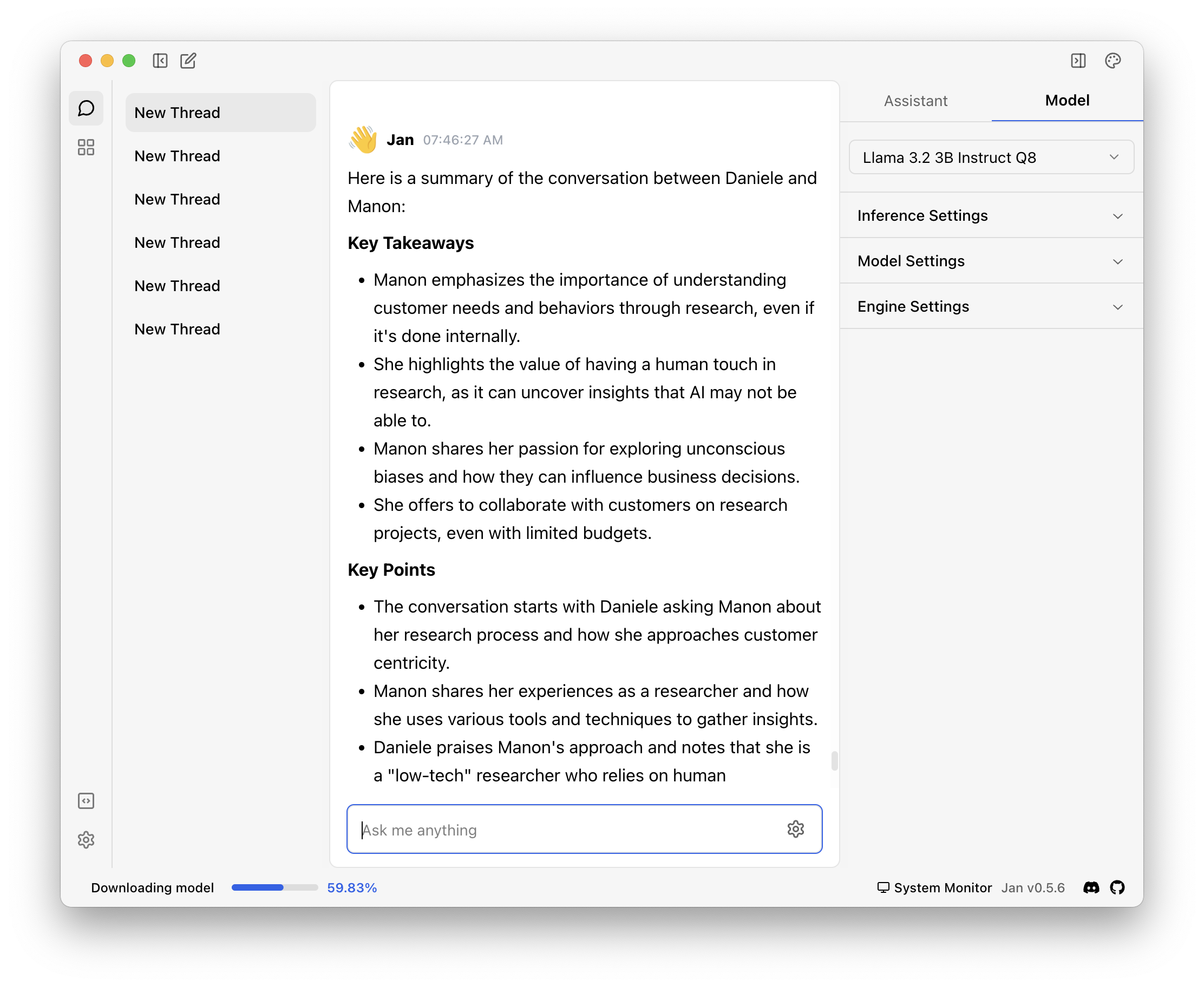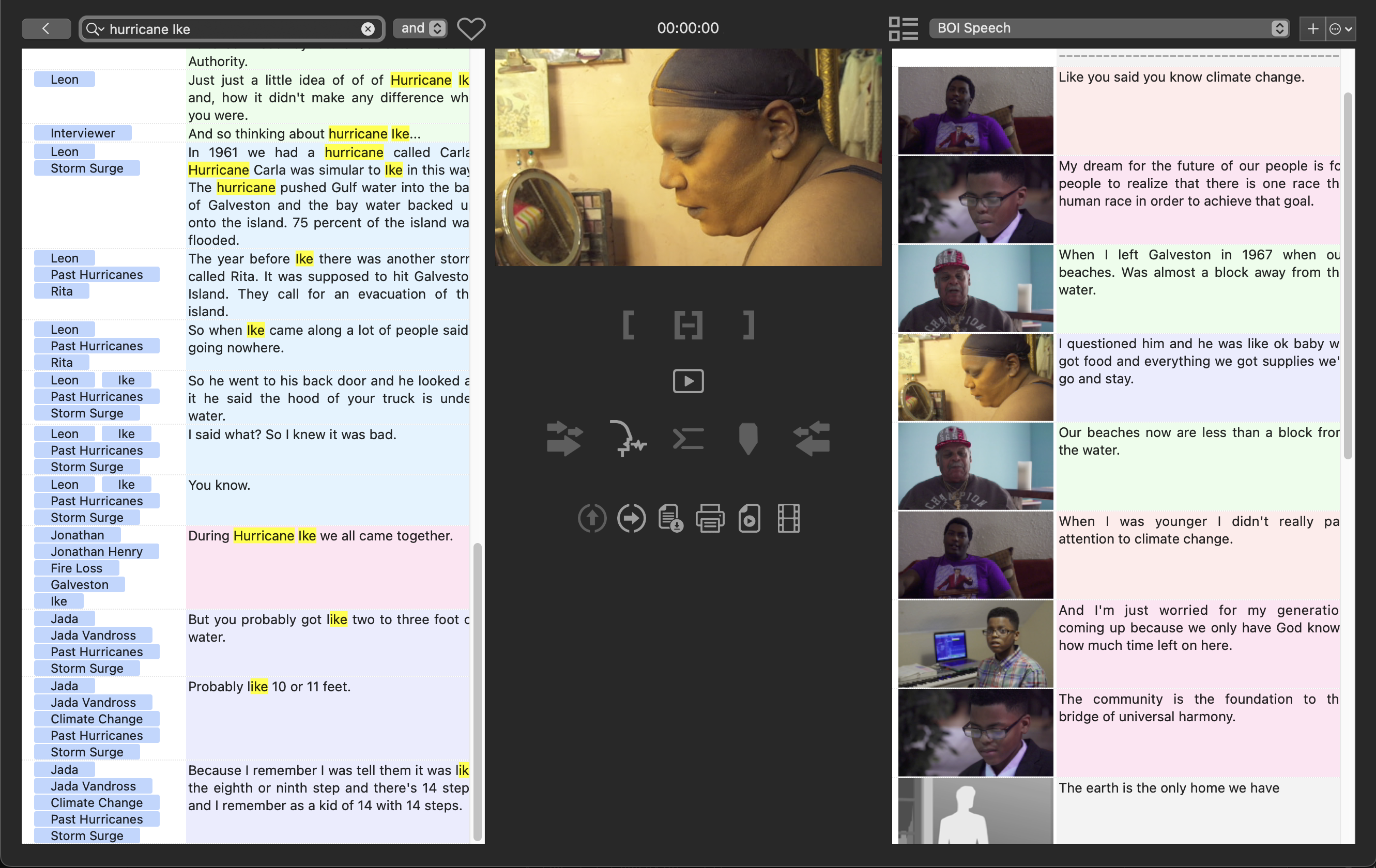- Oct 6, 2024
Why I'm exploring AI tools that run on my Mac
- Daniele Catalanotto
- AI
Published in the Backstage Blog
AI has been useful to me
In the last years I've been playing with AI tools a lot in my work. It has changed how I edit my videos as I'm now using Descript and edit videos like I would text files. It has helped me with summarization of long webinars or interviews that I've hosted by giving me a first draft of a summary.
But there are two issues
Most of these AI tools are all doing the hard work in the cloud, and not my machine. This creates two issues that could be solved by running AI on device, especially if you have a good machine, just like I have with my Macbook Pro M3.
Energy consumption
AI tools like ChatGPT use a shit load of energy and water to run well. And that sucks.
A 100-word email generated by an AI chatbot using GPT-4 requires 519 milliliters of water, a little more than 1 bottle. — The Washington Post
From what I understood, and I'm not an expert using AI on device uses much less energy than what for example ChatGPT would use.
"On-device AI also brings down energy consumption significantly compared to running workloads on a much bigger infrastructure like the cloud." — The Times of India
Privacy
With stuff going in the cloud, there is always a question of privacy. In most of my work, that's not such a big issue, as a lot of the work where I use AI is then published on the internet. But for some of my colleagues and friends this is an issue, especially when their profession has legal requirements that doesn't allow them to process any data outside of Switzerland.
In such cases, running AI directly on your laptop solves both the privacy and legal issue.
Alternative AI tools that run on a Mac
So knowing all of that I'm starting to explore how I can still benefit of the help from AI tools, but without the huge energy cost (which is the biggest issue for me).
Here are two tools that I've tried out that look pretty interesting to me.
ChatGPT alternative on device
Jan.ai is a ChatGPT alternative that can work without internet connexion or without sending any data to anyone.

One of the pretty nice aspects of this tool is that you can download and test different models, and see the one that works best for you.

In my early tests, I've noticed that Llama models for examples are much faster than the Mistral or Gemma ones on my Macbook Pro.
Audio transcription with Mac
MacWhisper let's you use OpenAI Whisper model for transcription directly on your mac, without any data passing by the servers of OpenAI.

A tool like this could help me transcribe a webinar or interview. It's something that I like to have as it allows:
To create subtitles for the videos
To have a text version of the video that is findable more easily via Google
To have a text version for those who prefer to read, or want to jump more easily with a simple CMD+F to a specific part of the interview.
The problem that isn't solved: an alternative to Descript
I've been using a lot Descript in the past months, and as I've become more aware of the energy consumption of the tool, it obviously makes the tool feel much less sweet than before.
That's why I'm starting to explore alternatives. Here a few of those that I already found:
Premiere Pro Text Based video editing:
Adobe Premiere pro has now also a text-based video editing tool, integrated directly within the app.

I'm not sure yet if the transcription happens on device, but from what I could see online it seems that it is the case. It's something that I should test out. In the past I've always found that Premiere Pro is a bit too complex or powerful for my needs, that why I prefered to use Screenflow instead of Premiere when I wasn't using Descript.
Builder NLE by LumberJack System
Builder NLE is a plugin that works on top of Final Cut and Premiere and that seems to allow to make a first cut of a video by working with text.

But just looking at the demo videos and the screenshots, the UI and UX of the plugin make me already feel that this plugin will take all the joy out of working with video.
It's not solved yet
The cost of going back to a classical video editing tool will be pretty high for me, as I'm really happy with Descript, but the sustainability cost is also high.
Descript has a lot of features that are very good for me when it comes to long form interviews and webinars: it removes automatically the filler words, adds automatically chapters, etc.
As you see from my writing here, I'm still ambivalent about this issue, and will need to continue my explorations.
At this stage I see three possible futures:
Use an alternative: like Premiere Pro so that I can keep the text-based video editing, but I'll loose a lot of the automated features
Go back to Screenflow: because the tool works really well, it has a well integrated stock footage and audio library, the animation features are easy to use. But I'll loose all the automated features and the text-based video editing
Stay with Descript: but I'm not sure if this is something that I philosophically or ethically will be able to deal with as the energy usage might be gigantic compared to using a standard video editing tool. It would be interesting to hear from Descript what the sustainability impact of Descript is.
Newsletter
Weekly Service Design Digest
Meet the creator
I worked with clients from all over the world to help them find innovative solutions to their problem. I've been blessed to be able to learn a lot.
Today I want to share these learnings back with the community. That's why I've built the Swiss Innovation Academy.